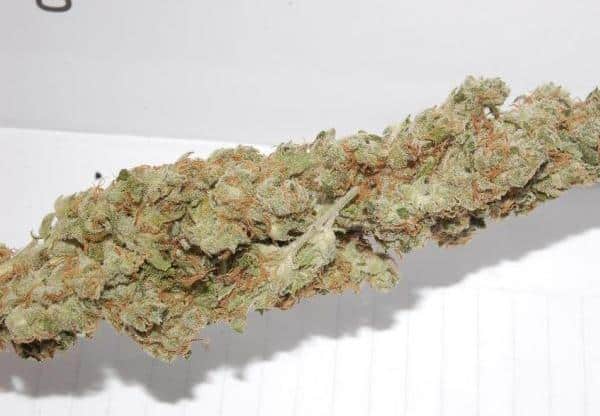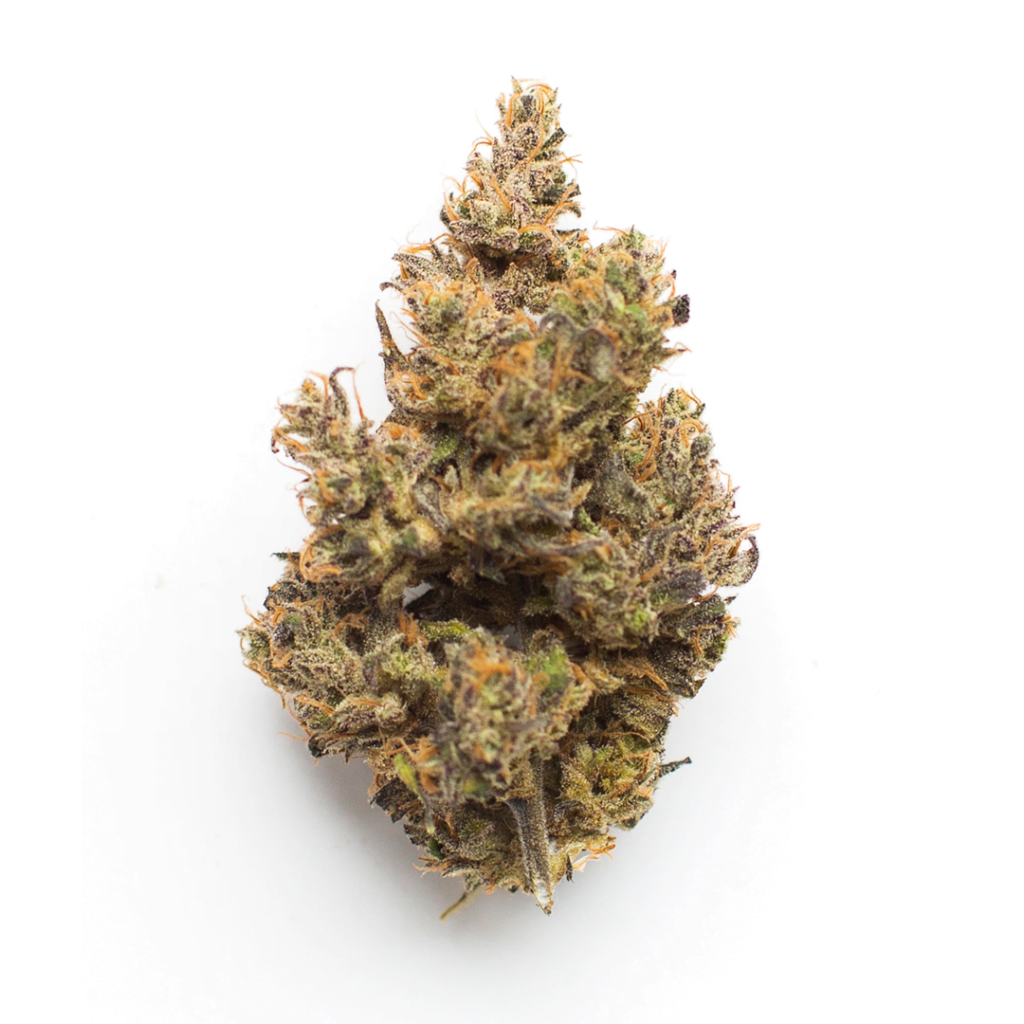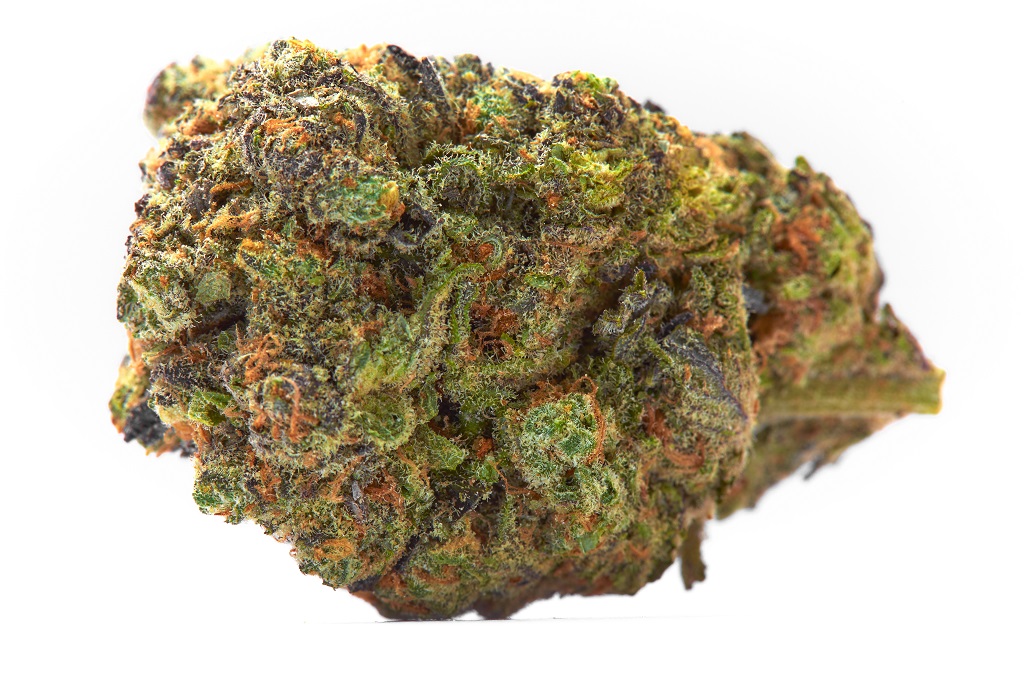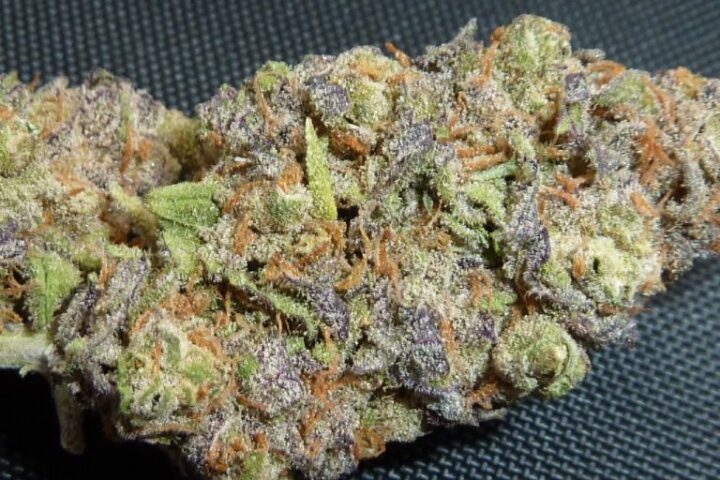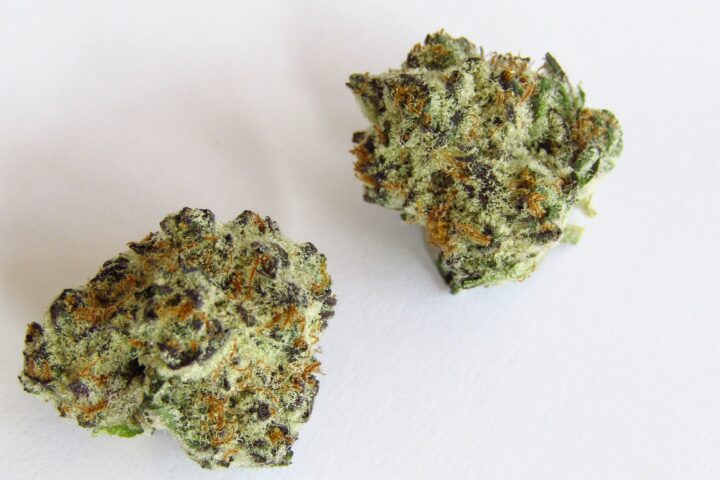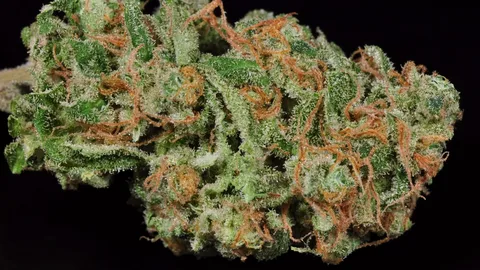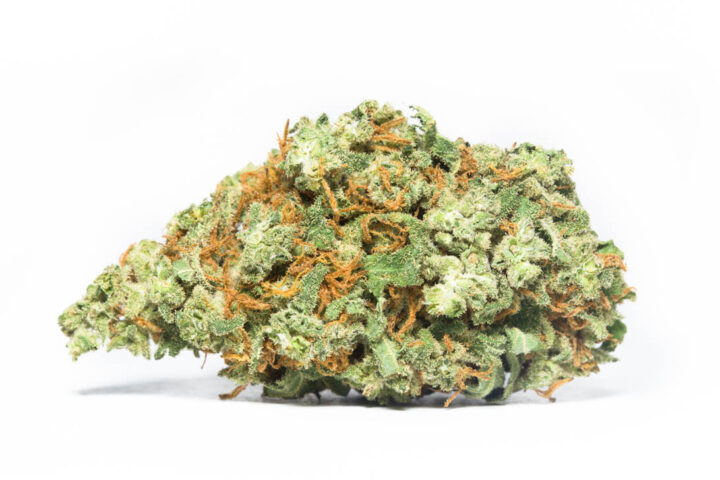Origin and Genetics
Parent Strains
The term “super skunk” refers to a cannabis strain known for its potent and long-lasting effects. The name suggests that it has been genetically engineered to produce higher levels of THC than regular skunk strains, with ‘super’ implying an enhanced potency.
Origin is often considered to be the Netherlands in this context, given the country’s well-documented history with cultivating cannabis for both medicinal and recreational purposes.
Cannabis strains are typically the result of cross-breeding between two parent strains. This process allows breeders to combine desirable traits from each strain and create a new offspring with unique characteristics.
The genetics behind super skunk can be broken down as follows: it is often stated that the strain was developed by crossing the popular Skunk #1 with an unknown Afghan landrace.
This cross-breeding resulted in a strain that retains the earthy, skunky flavors of its parent but with an even greater potency and a more pronounced effect on users. Super Skunk weed has gained popularity worldwide for its intense THC levels and sedating properties.
The genetic makeup of super skunk can also be influenced by factors such as climate, soil quality, and growing methods. However, the core characteristics remain relatively consistent due to the strain’s potency and broad appeal.
Super Skunk is a cross between Super Skunk’s two parent strains: Skunk #1 and Afghani, developed by Sensi Seeds in the 1990s.
- The origins of Super Skunk can be attributed to the innovative work of Sensi Seeds, a renowned cannabis seed bank that has been at the forefront of developing new and exciting strains since the 1980s.
- Sensi Seeds’ goal was to create a strain that combined the best characteristics of two iconic parent strains: Skunk #1 and Afghani.
- Skunk #1, developed in the late 1970s by Sacred Seed Company, is a classic indica-dominant hybrid known for its potent, earthy aroma and high THC content.
- Afghani, on the other hand, is a pure indica strain originating from Afghanistan, prized for its relaxing effects and pungent, herbal flavor profile.
- By crossing these two strains, Sensi Seeds aimed to create a hybrid that would not only exhibit the potency of Skunk #1 but also inherit the calming properties of Afghani.
- The result was Super Skunk, a strain designed to provide users with a balanced high that combines the euphoric effects of its sativa parent with the relaxing properties of its indica counterpart.
- Genetically speaking, Super Skunk is a product of selective breeding, where Sensi Seeds carefully crossed and backcrossed the two parent strains to achieve the desired traits.
- The genetics of Super Skunk are 75% indica and 25% sativa, making it an indica-dominant hybrid that leans towards relaxation and pain relief rather than energizing or stimulating effects.
Description of Parent Strains
The origin of the Super Skunk strain can be traced back to the 1990s, when it was developed by Sensi Seeds, a renowned cannabis breeder based in Amsterdam. The company aimed to create a strain that combined the potency and flavor of its predecessors with increased yields.
Super Skunk is a hybrid of two popular strains: Afghani and Skunk No. The Afghani parent brings a robust and resinous trait, while the Skunk No. 1 contributes its famous “skunky” aroma and high THC content. By crossing these two strains, Sensi Seeds created a genetic powerhouse that would quickly become a favorite among cannabis enthusiasts.
The genetics of Super Skunk are primarily indica-dominant, with a balanced 80% indica to 20% sativa ratio. This means the strain’s effects will be more sedating and relaxing, making it ideal for evening use or for those looking to alleviate insomnia, pain, and anxiety. The indica dominance also contributes to the plant’s compact size and bushy growth habit, which can thrive in a variety of indoor and outdoor growing environments.
The parent strain, Skunk No. 1, is itself a legendary hybrid developed from three different strains: Afghani Indica, Mexican Sativa, and Columbian Gold. This genetic combination gave rise to the distinctive “skunky” aroma and flavor characteristic of Skunk No. When crossed with Afghani, Sensi Seeds retained these traits while amplifying the overall potency and yields of the resulting offspring.
The other parent strain, Afghani, is a pure indica that has been prized for centuries in its native region for its exceptional resin production and medicinal properties. By incorporating the Afghan genetics into Super Skunk, Sensi Seeds infused the strain with its robust flavor profile, which includes notes of earthy undertones, spice, and sandalwood.
When growing or consuming cannabis, it’s essential to understand the genetic makeup of any given strain to accurately predict its effects and performance. With a balanced indica-dominant ratio, Super Skunk offers an unrivaled combination of potency, flavor, and relaxation – making it a top choice for seasoned users seeking a high-quality experience.
Skunk #1, known for its strong and pungent odor, has been used to develop numerous hybrid strains. Afghani is an indica dominant strain from Afghanistan that provides a relaxing and calming effect.
The origins of cannabis strains can be complex, but many popular varieties have been developed through selective breeding programs. One such strain is Super Skunk, which was created by Sensi Seeds in the 1990s. Super Skunk is known for its strong and pungent odor, thanks to a genetic makeup that emphasizes the “skunk” characteristics of the parent strain, Skunk # Skunk #1 itself has been widely used as a breeding stock due to its exceptional potency and robust growth habit.
Skunk #1 was originally developed in the 1970s by Sacred Seed Company (later known as Sensi Seeds) through a deliberate cross-breeding of several high-potency varieties, including an Afghani indica strain. This indica-dominant strain from Afghanistan is prized for its relaxing and calming effects, making it an ideal choice for creating hybrid strains that combine potency with a sedative influence.
The genetics of Skunk #1 were influenced by the original “Skunk” phenotype developed in the 1960s by Sam the Skunkman. This variety was characterized by its strong skunky odor and fast flowering time, traits that have been preserved and amplified through breeding over the years. Sensi Seeds built upon this foundation to create Super Skunk, which boasts an impressive THC content and a distinctive aroma reminiscent of, you guessed it, a skunk.
In terms of genetics, Super Skunk has undergone significant modifications through backcrossing and line-breeding to enhance its potency and stability. The strain is now available in several seed varieties, each with its unique characteristics and growth habits. Growers who cultivate Super Skunk can expect high yields, robust plants, and an intense aroma that’s sure to leave a lasting impression.
The development of hybrid strains like Super Skunk represents the ongoing evolution of cannabis genetics, as breeders continually push the boundaries of what’s possible with plant breeding. By combining different varieties and selectively introducing desirable traits, growers can create new strains that cater to diverse preferences and needs.
Cannabinoid Profile
THC and CBD Content
The cannabinoid profile of a cannabis strain is a critical aspect of its overall character and effects. In the case of the Super Skunk weed strain, it boasts an impressive array of cannabinoids that contribute to its potency and therapeutic potential.
At the top of the list is THC (Tetrahydrocannabinol), the primary psychoactive compound in cannabis responsible for the “high” associated with marijuana use. With a THC content ranging from 18-22%, Super Skunk packs a punch that’s sure to satisfy even the most seasoned smoker.
But what about CBD? While it may not be as well-known as its psychoactive counterpart, cannabidiol (CBD) plays a crucial role in the therapeutic benefits of cannabis. In Super Skunk, the CBD content is relatively low at around 0.2-1.5%, which means its effects are likely to be subtle.
Now let’s take a closer look at the other cannabinoids present in Super Skunk:
- THC-A: 18-22% – This is the raw, acidic form of THC that must be decarboxylated to become active.
- CBD: 0.2-1.5% – As mentioned earlier, CBD is a non-psychoactive compound with therapeutic potential.
- CBN: 0.1-1.0% – Cannabinol, also known as CBN, is a non-psychoactive compound found in cannabis that has been shown to have sedative properties.
It’s worth noting that the exact cannabinoid profile of Super Skunk can vary depending on factors such as growing conditions, genetics, and drying methods. However, in general, this strain tends to lean towards a higher THC content with relatively low levels of CBD and other cannabinoids.
Overall, the cannabinoid profile of Super Skunk is characterized by its high THC content and low CBD content. This makes it an excellent choice for those seeking a potent and energizing experience, but may not be ideal for those looking to reap the therapeutic benefits associated with higher levels of CBD.
Super Skunk’s cannabinoid profile contains approximately 1520% THC, providing a potent high. Its CBD content is relatively low, around 1%, resulting in minimal therapeutic benefits.
- The cannabinoid profile of a cannabis strain refers to the specific combination and concentration of various cannabinoids present within its trichomes.
- Cannabinoids are the primary psychoactive compounds found in the cannabis plant, responsible for producing a range of effects from relaxation to euphoria.
- THC (Tetrahydrocannabinol) is one of the most well-known cannabinoids, renowned for its potent psychotropic properties. It is the primary contributor to the “high” associated with cannabis use.
- In the case of Super Skunk, its THC content is reported to be in the range of 15-20%, which is considered quite high compared to other strains.
- This elevated THC level enables users to experience a potent and intense psychoactive effect. However, it’s essential to note that individual tolerance and sensitivity to THC can vary greatly.
- CBD (Cannabidiol) on the other hand, is another significant cannabinoid found in cannabis. It is non-psychoactive, meaning it does not produce a “high” or intoxication.
- Instead, CBD is often credited with providing therapeutic benefits such as pain relief, inflammation reduction, and anxiety mitigation.
In Super Skunk’s case, its CBD content is relatively low at approximately 1%. This scarcity of CBD translates to minimal therapeutic advantages, limiting the potential for this strain in treating medical conditions or promoting relaxation without the psychotropic effects.
Super Skunk Cannabinoid Breakdown
- THC (Tetrahydrocannabinol): 15-20%
- CBD (Cannabidiol): Approximately 1%
Important Notes
The exact cannabinoid profile may vary depending on the grower, climate, and cultivation methods.
As a result, it’s always recommended to consult with a medical professional or a certified cannabis expert for accurate information on any strain’s effects and benefits.
Effect of Cannabinoids on User Experience
The cannabinoid profile of any cannabis strain, including Super Skunk, is a crucial aspect that determines its effects on the user experience. Cannabinoids are the primary bioactive compounds found in the Cannabis sativa plant, responsible for producing a wide range of psychological and physiological effects.
Super Skunk, being an indica-dominant hybrid, contains a high proportion of THC (tetrahydrocannabinol), which is the primary psychoactive cannabinoid responsible for its euphoric and relaxing effects. The strain also contains a significant amount of CBD (cannabidiol), which is known for its therapeutic properties, including pain relief and anti-inflammatory effects.
The cannabinoid profile of Super Skunk typically includes:
- THC: A dominant presence, responsible for the psychoactive effects of the strain. The THC content in Super Skunk can range from 15% to 22%, making it a potent indica-dominant hybrid.
- CBD: A significant secondary cannabinoid that contributes to its therapeutic properties, including pain relief and anti-inflammatory effects.
- CBN (Cannabinol): A non-psychoactive cannabinoid produced as a result of THC degradation. CBN contributes to the sedative and relaxing effects of the strain.
- CBV (Cannabigerol): A minor cannabinoid known for its anti-inflammatory properties and potential therapeutic applications.
The effect of cannabinoids on user experience depends on various factors, including the individual’s tolerance level, the method of consumption, and the ratio of THC to CBD. When consumed in moderate amounts, Super Skunk can produce a range of effects, including:
- Relaxation: The strain’s high CBD content contributes to its relaxing and calming effects, making it suitable for individuals seeking relief from stress and anxiety.
- Pain Relief: The combination of THC and CBD in Super Skunk makes it an effective pain reliever, particularly for individuals experiencing chronic pain or inflammation.
- Sedation: The high CBN content in the strain contributes to its sedative effects, making it suitable for individuals seeking relief from insomnia or sleep disorders.
However, when consumed in excessive amounts, Super Skunk can produce unwanted side effects, including:
- Dizziness: The high THC content in the strain can cause dizziness and disorientation, particularly for individuals with a low tolerance level.
- Paranoia: The psychoactive effects of the strain can lead to paranoia and anxiety in some individuals, particularly those with a history of mental health disorders.
- Mood Swings: The rapid changes in mood associated with the strain’s high THC content can be intense and uncomfortable for some individuals.
In conclusion, the cannabinoid profile of Super Skunk is a complex blend of cannabinoids that contributes to its unique effects on user experience. While the strain offers numerous therapeutic benefits, it also requires careful consideration and moderation due to its potency and potential side effects.
The high amount of THC produces an intense euphoric effect, suitable for users seeking pain relief or relaxation.
- The Cannabinoid Profile of Super Skunk Weed Strain is a crucial aspect that sets it apart from other cannabis varieties.
- As a high-THC strain, Super Skunk boasts an impressive cannabinoid profile that is tailored to provide users with a potent and intense euphoric experience.
- The THC levels in this strain are significantly higher than average, ranging between 15% to 20%, depending on the growing conditions and genetics of the particular plant.
- This high amount of THC produces an intense euphoric effect that is suitable for users seeking pain relief or relaxation.
- When consumed in moderate amounts, Super Skunk can help alleviate symptoms associated with anxiety, stress, and inflammation, making it a popular choice among medical cannabis patients.
- The strain’s high THC content also contributes to its sedative properties, which can be beneficial for individuals struggling with insomnia or sleep disorders.
- However, users should exercise caution when consuming Super Skunk, as the intense euphoric effect can be overwhelming for those who are new to cannabis or sensitive to THC.
- It is also worth noting that Super Skunk’s cannabinoid profile may vary depending on the specific grow and production methods used by different growers.
- Some cultivars of Super Skunk may have higher levels of CBD, CBG, or other cannabinoids, which can alter the strain’s effects and medicinal properties.
Tips for Growing Super Skunk
Environmental Conditions
The Super Skunk strain is a popular and potent variant of cannabis that has gained recognition for its unique characteristics and effects. To ensure successful growth, it’s essential to understand the optimal environmental conditions required.
Temperature plays a crucial role in the growth and development of Super Skunk plants. They thrive best in temperatures between 65°F (18°C) and 75°F (24°C). Avoid exposing them to temperatures below 55°F (13°C), as this can cause stress and potentially lead to damage.
Lighting is another critical aspect of growing Super Skunk. These plants prefer a Mediterranean climate with plenty of sunlight, but they also respond well to artificial lighting. To maximize growth, aim for an average of 18 hours of light per day using LED grow lights or high-intensity discharge (HID) lamps.
Humidity levels significantly impact the health and productivity of Super Skunk plants. Maintain a relative humidity (RH) level between 40% and 60%. High humidity can lead to fungal diseases, while low humidity may cause water stress and nutrient deficiencies.
Super Skunk plants have moderate watering needs. Water them thoroughly when the top inch of soil feels dry to the touch. However, be cautious not to overwater, as this can cause root rot and damage to the plant.
Pests and diseases are a significant concern when growing Super Skunk indoors or outdoors. Regularly inspect your plants for signs of infestation or infection, such as aphids, spider mites, powdery mildew, or root rot. Use organic or integrated pest management (IPM) methods to control any issues that arise.
Super Skunk is a relatively easy-to-grow strain, but providing optimal nutrients is essential for robust growth and high yields. Feed your plants with a balanced fertilizer during the vegetative stage and switch to a bloom booster once they start flowering. Be sure to follow the manufacturer’s instructions for application rates.
Pruning and training are also essential techniques when growing Super Skunk. Regular pruning helps maintain plant shape, promotes healthy growth, and increases yields. Train your plants using techniques such as SCROG (Screen of Green) or SOG (Sea of Green) to maximize bud production and improve air circulation.
Super Skunk has a moderate flowering period of 60-70 days, making it suitable for growers with experience and those looking for a quick turnaround. With proper care and attention to environmental conditions, you can expect high-quality buds with a THC content ranging from 15% to 20%
Super Skunk requires a warm and dry climate to thrive. It can be grown indoors with precise temperature control, as it prefers temperatures between 6575°F (1824°C).
Super Skunk is a popular marijuana strain known for its high THC content and pungent aroma, making it a favorite among growers and enthusiasts alike.
To grow Super Skunk successfully, it’s essential to provide it with the right climate conditions. This strain thrives in warm and dry environments, which can be replicated indoors using precise temperature control.
The ideal temperature range for growing Super Skunk is between 65-75°F (18-24°C). It’s crucial to maintain this temperature consistently throughout the growing period, as deviations can lead to reduced yields or stunted growth.
Humidity levels should also be controlled to prevent moisture from accumulating in the grow area. A relative humidity of 40-50% is optimal for Super Skunk, as it allows for healthy growth without promoting mold or mildew development.
Lighting requirements for Super Skunk are moderate to high. This strain responds well to a balanced spectrum of light, which includes both blue and red wavelengths. Growers can use LED or HPS lighting systems to achieve this balance and promote robust growth.
Nutrient intake is also critical for Super Skunk’s development. A balanced fertilizer with a NPK ratio of 20-20-20 should be used throughout the growing period, adjusting the dosage as needed based on plant size and growth rate.
Pruning and training techniques can help optimize Super Skunk’s yields and enhance its overall appearance. Regular pruning helps control branch growth and encourages the development of dense buds, while topping or staking the plant promotes a bushy shape and increased light exposure.
Avoid overwatering, as this strain is sensitive to root rot caused by excessive moisture. Check soil moisture levels regularly and adjust watering schedules accordingly.
Pest and Disease Control
Super Skunk is a popular cannabis strain known for its potent and pungent aroma, high THC content, and fast flowering period. To grow this strain successfully, follow these tips:
- Choose the Right Environment: Super Skunk thrives in a warm and dry climate with average temperatures between 18-25°C (65-77°F). Ensure good air circulation to prevent moisture buildup.
- Lights: Super Skunk requires a lot of light, so invest in high-intensity LED or HPS grow lights with a PAR reading of at least 400 μmol/s.
- Nutrients: Feed your plants with a balanced fertilizer (20-20-20 NPK) during the vegetative stage and switch to a bloom-specific formula (10-30-20 NPK) during flowering.
- Pest Control: Super Skunk is susceptible to pests like spider mites, aphids, and whiteflies. Monitor your plants regularly and take action immediately if you spot any infestation.
- Catch Pests Early: Regularly inspect your plants for signs of pests, such as tiny eggs or actual insects on the leaves or stems.
- Use Organic Controls: Spray neem oil, insecticidal soap, or horticultural oil to control pests without harming beneficial insects.
- Disease Control: Super Skunk is prone to diseases like powdery mildew and root rot. Implement good growing practices to prevent the spread of disease.
- Air Circulation: Ensure good air circulation around your plants by pruning surrounding foliage or using fans to increase airflow.
- Keep it Clean: Regularly clean your grow space, tools, and equipment to prevent the spread of disease-causing spores and fungi.
- Pruning and Training: Prune and train your Super Skunk plants regularly to promote healthy growth and increase yields.
- Top Pruning: Remove the top of your plant to control its height, promote bushy growth, and improve air circulation.
- Train the Branches: Use trellises or stakes to train your branches to grow in a specific direction, promoting even light distribution and increasing yields.
- Pest- and Disease-Free Growing Medium: Ensure that your growing medium is free from pests and diseases. Use high-quality potting mix specifically designed for cannabis cultivation.
- Sanitized Soil: Treat your growing medium with a sanitizing agent, such as hydrogen peroxide or vinegar, to kill bacteria, fungi, and other microorganisms that can cause disease.
By following these tips for pest and disease control in Super Skunk, you’ll be able to grow a healthy, high-yielding crop with minimal fuss and effort.
To avoid pest and disease issues, keep the plants wellmaintained and inspect them regularly for signs of infestation or infection.
- To successfully grow Super Skunk, a high-quality cannabis strain, it’s essential to provide optimal growing conditions and monitor the plants closely.
- Select a location with ample sunlight, as Super Skunk prefers full-sun conditions to reach its maximum potential.
- The ideal temperature range for growing Super Skunk is between 18-24°C (64-75°F), with a slight drop in temperature at night.
- Water the plants regularly, but make sure not to overwater, as this can lead to root rot and other issues.
- Fertilize your Super Skunk plants with a balanced nutrient diet, rich in nitrogen, phosphorus, and potassium.
- Avoid using fertilizers that are high in nitrogen, as they can cause the plants to become leggy and prone to disease.
- Prune your Super Skunk plants regularly to promote bushy growth and encourage the formation of buds.
- Keep the growing area well-ventilated to prevent the buildup of fungal spores and other diseases that can affect the plants.
- Monitor the plants for signs of pest infestation, such as whiteflies, aphids, or spider mites, and take action promptly if you notice any issues.
- Regularly inspect the plants for signs of disease, such as powdery mildew or root rot, and treat them accordingly.
- Keep the growing area clean and tidy to prevent the spread of diseases and pests.
- Avoid overcrowding your Super Skunk plants, as this can lead to issues with air circulation and increased susceptibility to disease.
- By following these tips, you can help ensure a healthy and successful grow of Super Skunk, a high-quality cannabis strain known for its potency and unique effects.
- Y Griega Aka I Griega Weed Strain Information - October 9, 2024
- XXX OG Aka XXX Weed Strain Information - October 9, 2024
- White Gold Aka Oro Blanco Weed Strain Information - October 8, 2024

